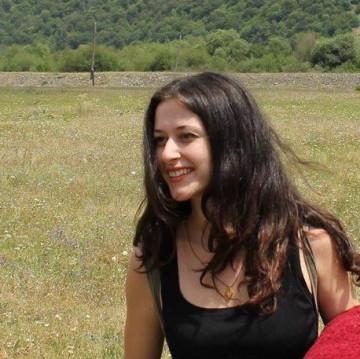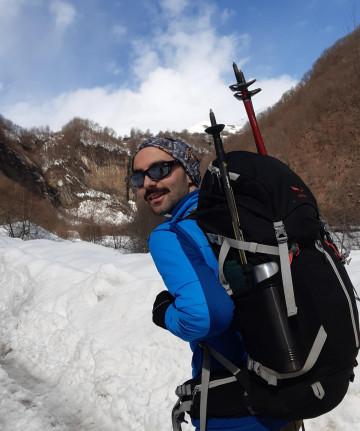
Help other travelers use your experience.
Review this destination, share your thoughts, impressions, pros and cons.
Let's make traveling easier than ever.
The Church of the Virgin Mary of Khatissopeli is located in the Kvemo Kartli region, in the village of Khatissopeli, Bolnisi Municipality.
From the extensive inscriptions on the western wall of the church, we learn that the church was built by Ketevan, the wife of Turmanbeg Turmanidze, the governor of the Bolnisi Khevi, after the death of her husband and son, during the reign of King Vakhtang V Shahnavazi of Kartli (1658-1675). The "palace" must have been built at the same time. The church is a hall-shaped building. It is built of hewn Bolnisi tuff stone. The layout is rectilinear. The church stands on a low, single-tiered plinth. The walls are finished with a simple cornice. It is roofed with tiles. The door is on the west side, which is framed. On the sides are four paired shaft-shaped columns with their bases and capitals, supported by a double-shaft arch. The church has two windows: the west and the east. The east window is rectangular from the outside, the west one is arched. Both are decorated with reliefs set in a double-shaft frame. There is one shaft entablature on both sides of the arch of the west window. The west pediment is additionally decorated with reliefs of an eagle or a dove placed facing each other on a relief entablature and an ornamental image of an equilateral cross. There are three independent inscriptions written in Mkhedruli on the top of the door, which read as follows: "... May God glorify the king-king patron Shahnavaz and the queen-queen patron Mariam. We Turmanidze Turman and our ninth Ketevan were in Qizilbash, and when the happy Khan showed mercy and sent King Rostom to Kartli as a kingdom, he also showed mercy to us and brought us out with him and gave us our ancestral land and the village of Khatisopeli, which was destroyed. By the grace of the happy Khan and King Rostom, we rebuilt the city and became free from the kings and lords of Georgia. We did not ask for anything, not for bread, not for bread, not for bread, not for bread, not for a state, we did not ask for anything more than one army-hunting. I hated God, I, Ketevan, and the wrath of God has come upon me, and in this village my master and my son Gedal died, I remained childless, I moved here, I built the temple of the All-Holy One as a treasure for his soul. Behold, the Immaculate One, who loved the unforgiving Christ, our Lord God, sacrifice this small offering and accept Gedal's mercy instead and hear the sweet voice of the Lord. " On the northern edge of the western wall there is another inscription: "Q. Remember the Lord, the master of this poor man, Amen." On the right side of the door there is a fourth inscription: "Nicholas, Lord, have mercy, Ka~ Tnie~" (1677). The semicircular apse is separated by a side. The interior was plastered with lime (its current condition is unknown, as the church is closed). The church is surrounded by a fence, the southern wall of which is the wall of a two-story building. The building has a roof between floors of square wooden beams. On the first floor, which seems to have been a single space, there are four fireplaces and eight rectangular niches. The building is built with a rectilinear arrangement of partially processed tufa squares on a lime-dughab. The base of an early medieval stele with the image of a cross is embedded in the northern wall of the fence.



Our guides are ready to help you on this trip



Buy our tours online and explore incredible Georgia!




Help other travelers use your experience.
Review this destination, share your thoughts, impressions, pros and cons.
Let's make traveling easier than ever.
Please login to ask a question
Ask a Question